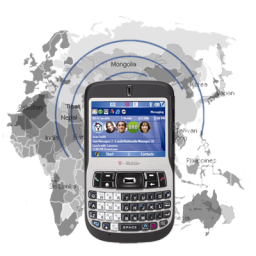Tips & Ideas
Tips
-
Be purposeful
Don't use mobile devices (especially shared devices) just because of the novelty factor; instead, select devices best suited for your activity. Activities that require any printing, a lot of typing, collaborating on Google docs, or accessing non-mobile websites should be done on a desktop or laptop computer, whereas any recording activities (audio, video, screencast, or pictures) are easier on an iPod, iPad, or other handheld device.
-
Establish classroom rules and etiquette

Don't wait until students misuse mobile devices to try to reign them back in. Be up front with students about why you're choosing to use mobile devices, expectations for their behavior, and consequences for not following the rules. Start with your building's guidelines regarding devices and add your own, e.g. have students leave devices screen-down on their desk when not in use.
-
Encourage students to bring their own device
Most students have a small computer in their pocket - their phone! Even non-smartphones can be used in many activities using text messaging. Notify students ahead of time when you'll be doing an activity in which they can use their own laptop, tablet, phone, other mobile device. This will encourage students to use their personal devices for learning outside of school, reduce the wear on school devices, and allow shared devices to be used in more classes.
-
Use device-agnostic content
When selecting websites, activities, videos, apps, etc. for your lesson, try to choose resources that can be accessed on any device and are free or low cost. This will allow students to use the device they're most comfortable with (e.g. their own tablet) or complete an activity at home in case of an absence. This means using websites/web apps when possible or finding apps that are available on both Apple and Android devices.
-
Test drive everything
Content will display differently in each device and possibly act differently when multiple people access the same resource on the school network. While you can't test every device, if you plan to have students do an activity on mobile devices, test it out on an iPod or iPad, as these are both the most restrictive device (flash activities will not run on them) and what is available for checkout.
Ideas
- Track reading fluency or conduct oral exams via audio recordings
- Have students demonstrate mastery - or lack there of - via screencast recordings
- Create video or screencast tutorials (or have students create them!)
- Use devices as a reference tool to access dictionaries, encyclopedias, and databases
- Have students create digital stories with pictures, videos, and audio
- Document science experiments using video or photos
- Submit lab results, surveys, exit slips, etc. via Google forms
- Conduct assessments using student response apps or online forms/quizzes
- Record group discussions
- Back channel / take group notes during a movie
- Digital scavenger hunt using QR Codes
| If you get stuck on any task, please post your questions to the Discussion Forum. |